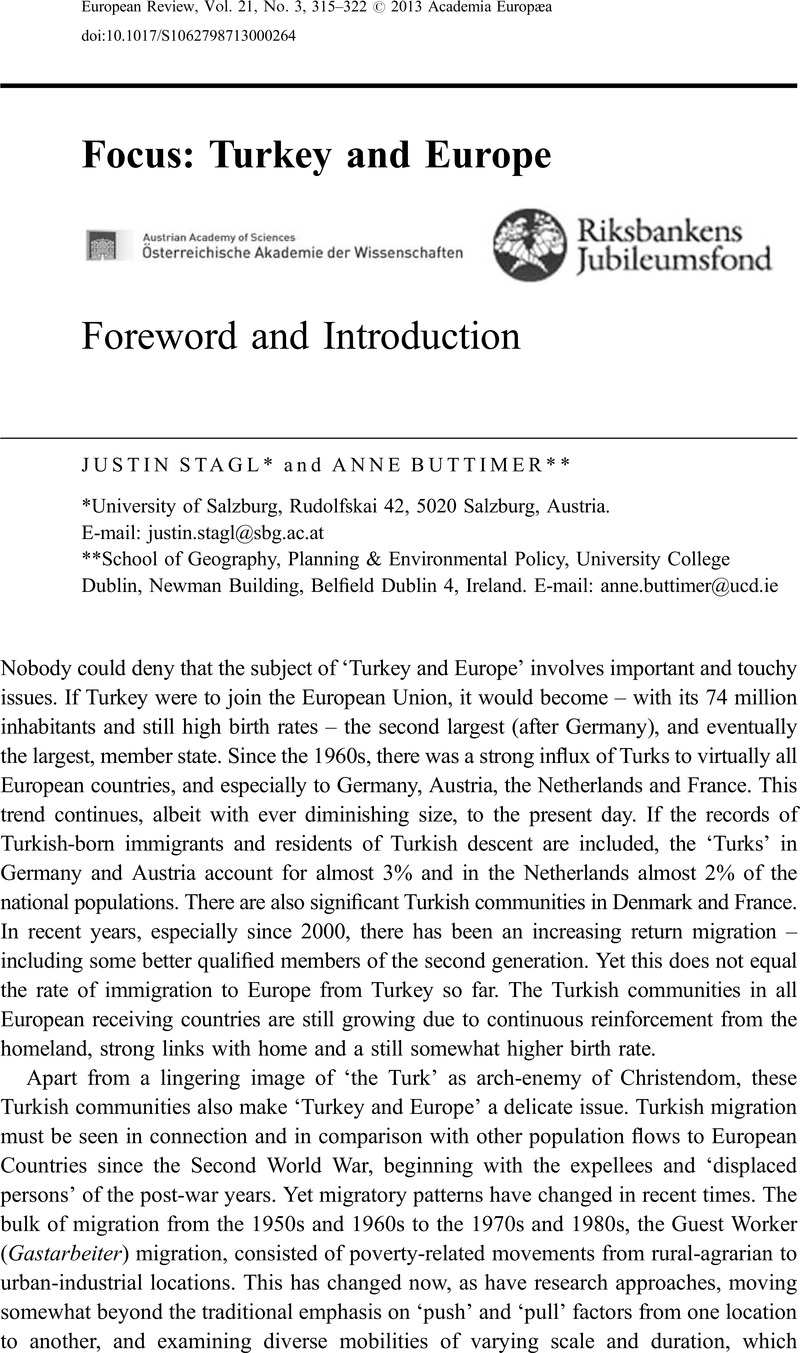No CrossRef data available.
Article contents
Foreword and Introduction
Published online by Cambridge University Press: 18 July 2013
Abstract
An abstract is not available for this content so a preview has been provided. Please use the Get access link above for information on how to access this content.

- Type
- Focus: Turkey and Europe
- Information
- Copyright
- Copyright © Academia Europaea 2013
References
1.Noll, H.-H. and Weick, S. (2001) Zuwanderer mit türkischem Migrationshintergrund schlechter integriert. Indikatoren und Analysen zur Integration von Migranten in Deutschland. ISI (Informationsdienst Soziale Indikatoren) 46 (July), p. 6.Google Scholar
2.Sarrazin, T. (2012) Deutschland schafft sich ab. Wie wir unser Land aufs Spiel setzen (Munich: Deutsche Verlags-Anstalt). Sarrazin was senator for finances in the City Government of Berlin and board member of the German Federal Bank, from which position he had to step back due to the stir his pamphlet has caused in Germany. The expression ‘immigration into the welfare state’ he used in his numerous interviews. The Turkish community in Germany he discusses especially in Chapter 7 on immigration and integration (pp. 255–330). He took special care to present much statistical data that are not easily accessible and which have been, as far as we can see, not discussed with sufficient impartiality by his many detractors.Google Scholar
3.Ergun, K. (2011) Nostalgia Overdose. Homesickness in Wedding Ceremonies of the Turkish-German Community in Berlin. Paragrana, 20, pp. 121–128.CrossRefGoogle Scholar
4. The problem of discussing the problems connected with Turkish migration to Europe is that it is considered bad manners to speak of ‘problems’. This point is also made by Max Haller in his paper. When we applied for funding for this conference, we were advised not to use the term ‘problem’. Literature on Turkish migration to Europe is studded with well-meant euphemisms, safeguarding clauses and a kind of forced cheerfulness. Nonetheless, we uphold that scholarship should not take over the job of politicians to paint la vie en rose. This would mean a disservice to both the migrants and their host societies by preventing true-to-fact action.Google Scholar


